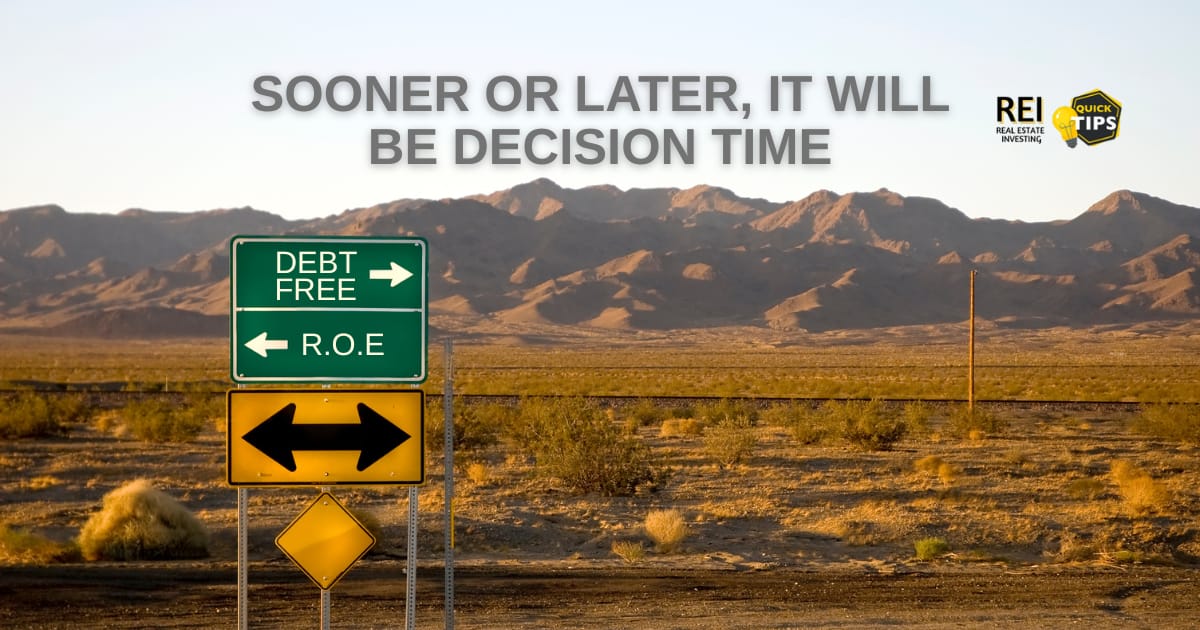- Real Estate Investing Quick Tips
- Posts
- Debt Free Forever?
Debt Free Forever?
Could There Be A Smarter Alternative?
Start investing right from your phone
Jumping into the stock market might seem intimidating with all its ups and downs, but it’s actually easier than you think. Today’s online brokerages make it simple to buy and trade stocks, ETFs, and options right from your phone or laptop. Many even connect you with experts who can guide you along the way, so you don’t have to figure it all out alone. Get started by opening an account from Money’s list of the Best Online Stock Brokers and start investing with confidence today.
When to Refinance a Rental: Knowing When Your Equity Goes Lazy

There’s a quiet debate among real estate investors that never really ends: should you aim to own rentals debt-free, or keep using leverage as long as it makes sense?
Let’s start with the appeal of no mortgage. It’s simple, safe, and stress-free. When you own rental units outright, your cash flow skyrockets, vacancies don’t keep you up at night, and you can weather almost any market cycle. Many investors dream of this stage — the pure “mailbox money” life.
But for more advanced investors, there’s another layer worth thinking about: Return on Equity (ROE).
The Case for Refinancing
Every year, your tenants pay down the mortgage, your property (hopefully) appreciates, and your equity grows. That’s great — until you realize that pile of equity might be working less and less efficiently.
ROE measures how hard your equity is working.
It’s calculated as:
ROE = Annual Cash Flow ÷ Total Equity
For example:
If your property nets $10,000 a year and you’ve got $200,000 in equity, your ROE is only 5%. That’s not terrible — but it’s not great either, especially if you could refinance, pull out $100,000 tax-free, and buy another property earning 10–12%.
This is why some experienced investors refinance when their ROE falls below target — often around 6–8%. The idea isn’t to pile on debt, but to redeploy lazy equity into higher-yielding opportunities.
The Case Against Refinancing
Leverage cuts both ways. Every refinance adds risk — bigger payments, higher exposure, and less margin if rents soften or rates rise. Debt-free owners sleep well at night because their survival isn’t tied to short-term market swings.
There’s also a psychological advantage: when you don’t owe the bank, you make decisions from a place of strength, not pressure. Some investors view that peace of mind as the ultimate return.
The Middle Ground
The smartest strategy might be to blend both philosophies. Pay down aggressively when rates are high or deals are scarce. Refinance strategically when rates are favorable and new opportunities justify the risk.
And remember: cash-out refinance proceeds aren’t taxable — you’re borrowing, not selling. That’s a tool worth understanding, not fearing.
Investor Takeaway
There’s no universal “right time” to refinance a rental — only the right time for you. Track your ROE once a year. When it drops, ask: “Could this equity earn more elsewhere without breaking my risk tolerance?”
With all due respect to Dave Ramsey — if every investor stayed debt-free, we wouldn’t have apartment towers, shopping centers, or half the skyline. Thoughtful leverage, not reckless debt, is what built most fortunes in real estate.


